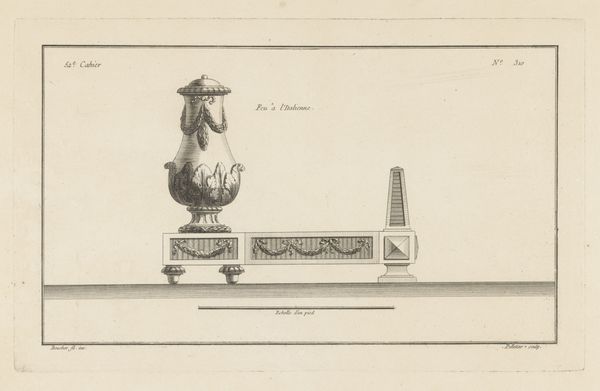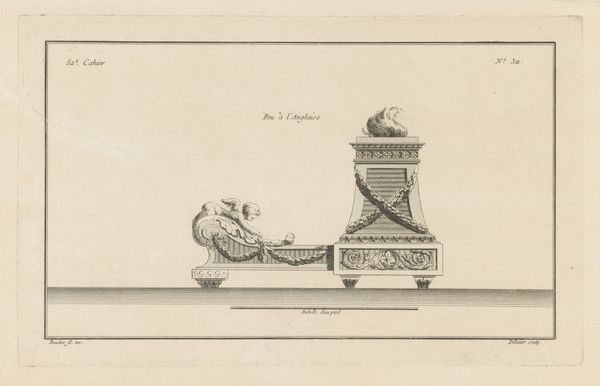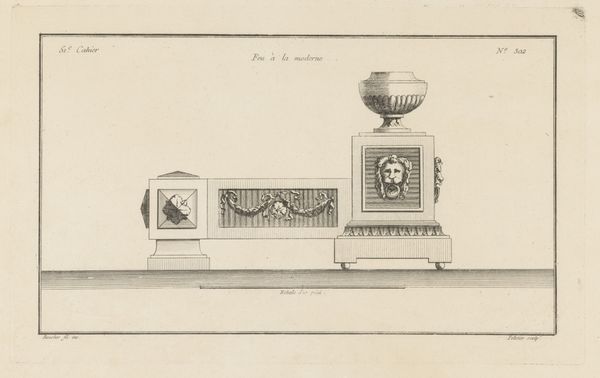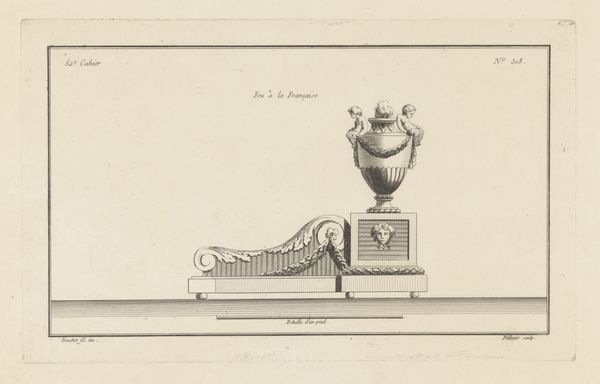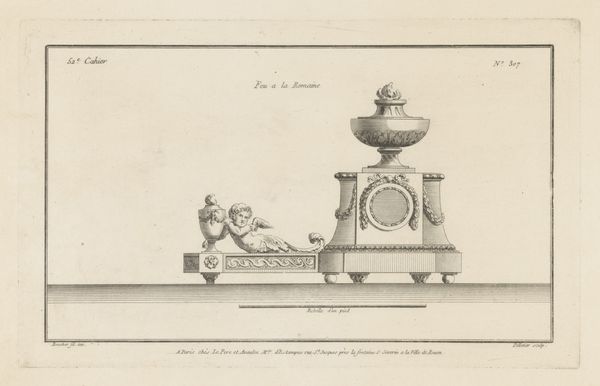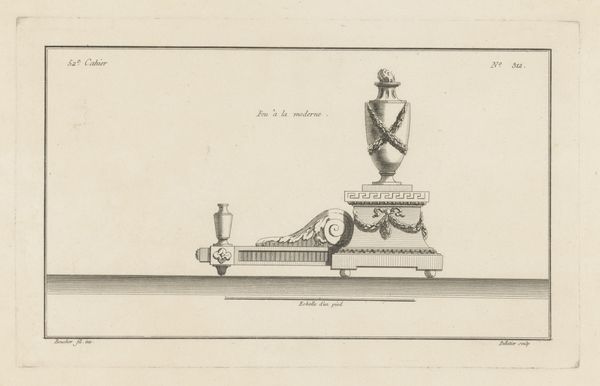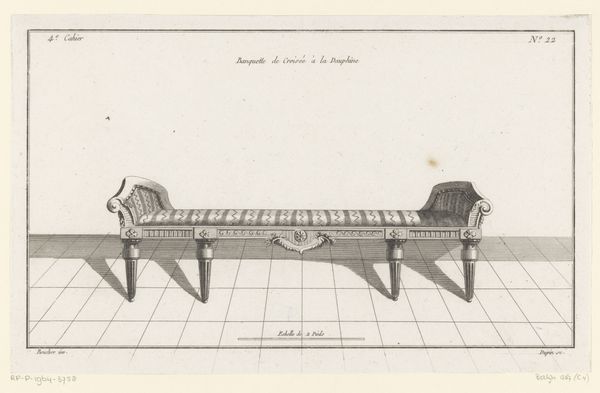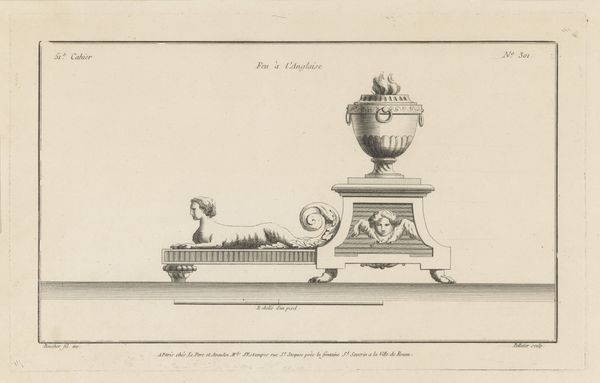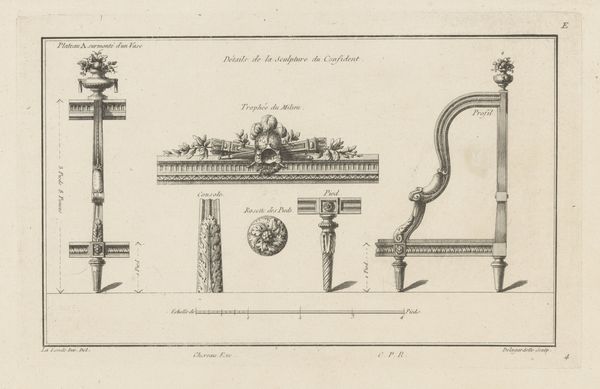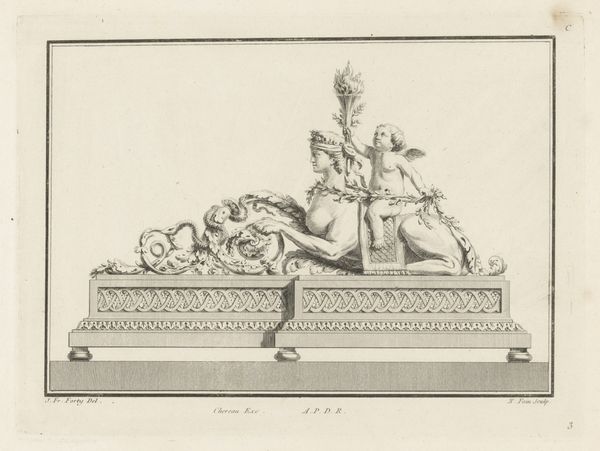
drawing, paper, engraving
#
drawing
#
neoclacissism
#
old engraving style
#
paper
#
geometric
#
line
#
decorative-art
#
engraving
Dimensions: height 204 mm, width 330 mm
Copyright: Rijks Museum: Open Domain
Editor: This is "Vuurbok met guirlande en vuur" – "Fire Dog with Garland and Fire" – an engraving on paper by Jean Pelletier, created between 1772 and 1779. It feels quite formal, a very precise depiction. What do you see in this piece, considering its materiality? Curator: I see an object produced within very specific social and economic circumstances. An engraving like this served as a template, disseminating a design to craftsmen who would then translate it into a physical object, likely for a wealthy household. The material – paper, ink – belie a chain of production, from the artist to the engraver, the printer, and finally, the artisan recreating this design in metal. The "Vuurbok" itself speaks to a specific type of consumption and domestic life. Consider the iron mines required for extraction and processing, plus foundries involved in crafting this and the tools/techniques required. What does it evoke for you? Editor: It makes me think about the relationship between art and craft, and how this engraving blurs those boundaries. It’s a design, but also an object of art in itself. Curator: Precisely. It challenges our modern ideas of artistic genius and unique creation. This wasn’t about individual expression, but about standardization and the efficient replication of desirable forms. It also raises questions about labor. How much were the artisans paid? What were their working conditions? This image flattens all that, presenting only the polished design. Editor: So, by examining the materials and the means of production, we can uncover hidden social and economic relationships embedded in the artwork? Curator: Absolutely. It prompts us to think critically about who benefited from this system, and who might have been exploited in its creation. That transforms a seemingly simple image into a document that speaks volumes about the society that produced it. Editor: I’ll definitely look at art with new eyes now, considering not just what it depicts, but also how and why it was made. Curator: That's the core of understanding its true cultural value and role.
Comments
No comments
Be the first to comment and join the conversation on the ultimate creative platform.
